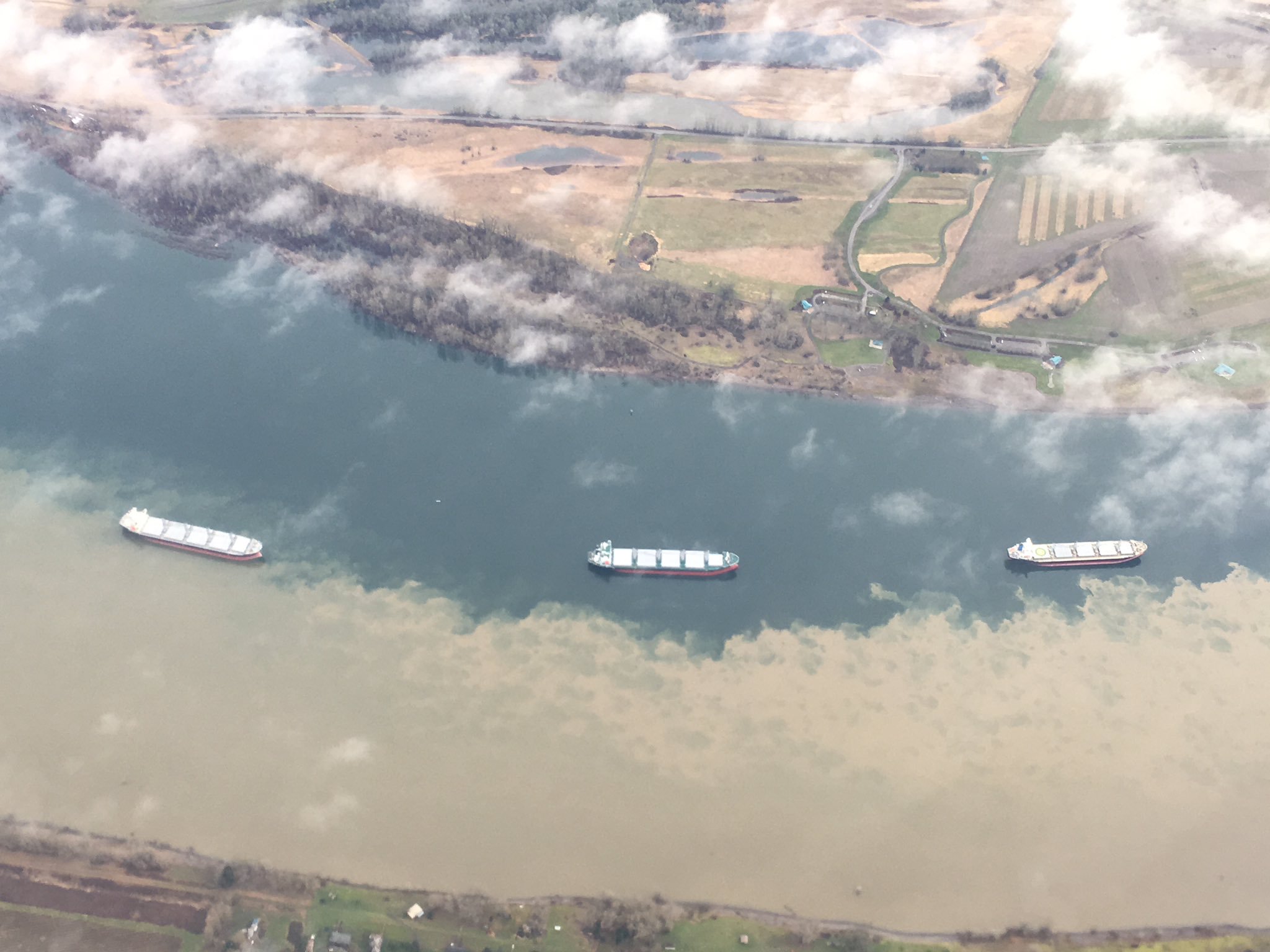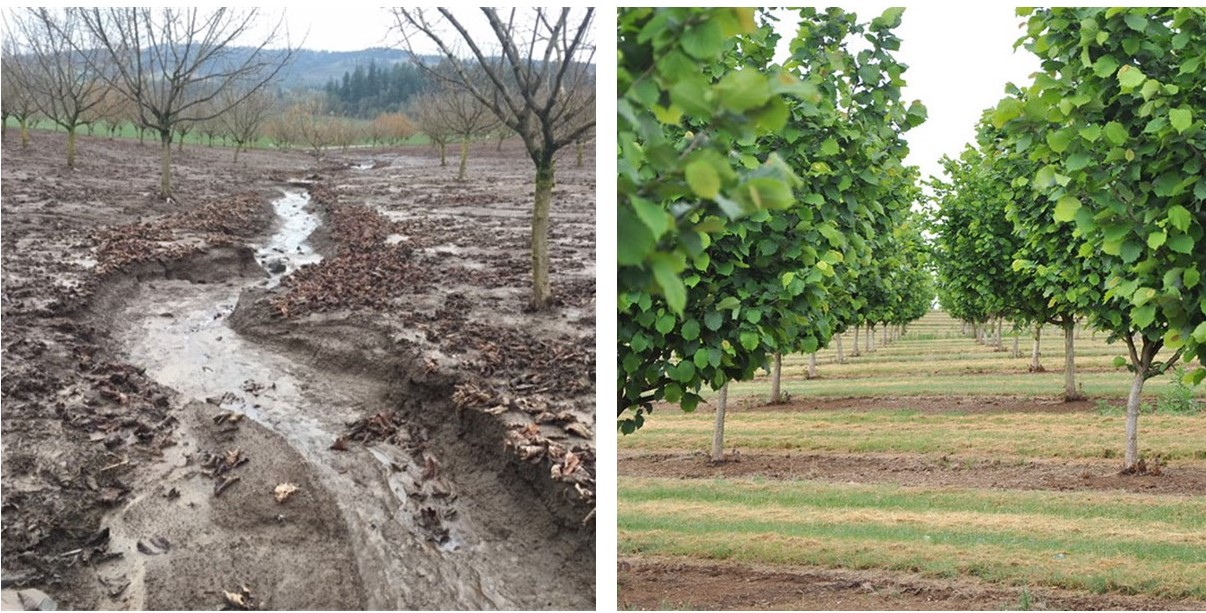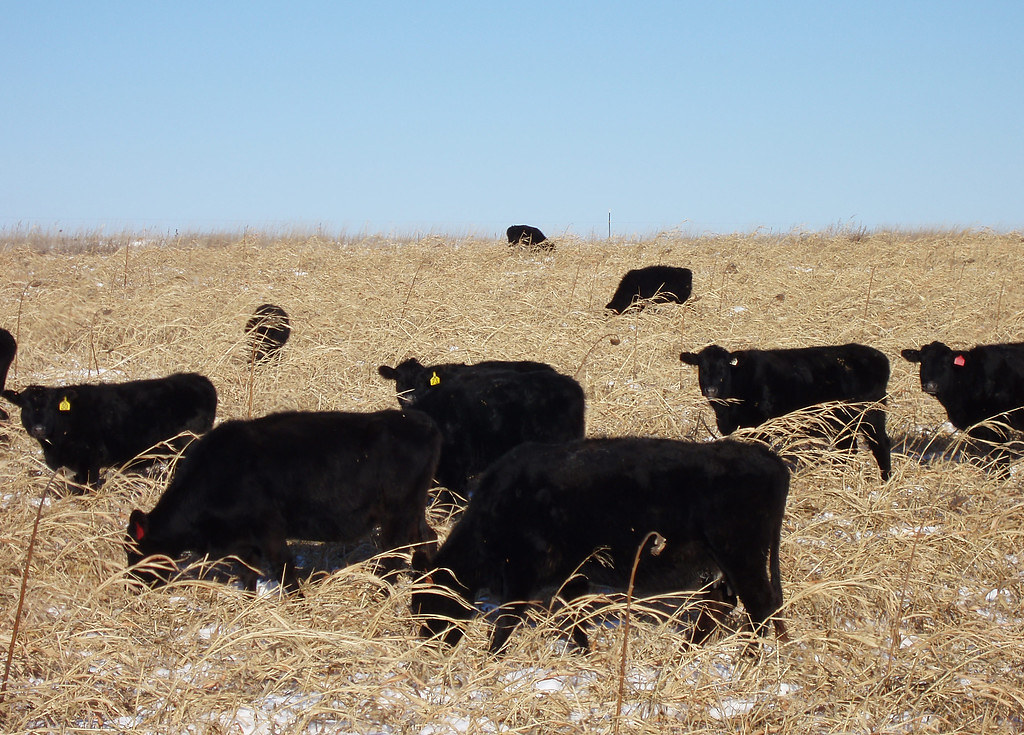Estimated reading time: 5 minutes

Cover crops, or crops grown to enhance soil health and water quality between cash-crop plantings, have the potential to mitigate some of the impacts of climate change in agricultural systems. Cover crops are not normally harvested, rather they are allowed to grow, die, and enhance the soil with organic matter as a “green manure.” Common cover crops include legumes (e.g., crimson clover, Austrian winter pea, hairy vetch), cereals and grasses (e.g., cereal rye, winter wheat, barley), and brassicas (e.g., canola, oilseed radish, mustard). Each species of cover crop provides different benefits, and cover crops can be mixed to receive multiple benefits.
Erosion is a major concern in agriculture. When fields are left fallow (uncovered), wind and water can erode soil and cause increased nutrient, pesticide, and fertilizer runoff, leaving soil less fertile and waterways polluted. Uncovered soil is also more vulnerable to extreme events like floods and high winds. By stabilizing and enriching the soil with organic matter, cover crops enhance soil resiliency to extreme weather events and help protect water quality, thereby making agriculture more sustainable and reducing environmental impacts.
The Benefits of Cover Crops
Cover cropping is not a new practice. For centuries, farmers planted cover crops to improve soil quality and reduce erosion. In the 20th century, the development of effective herbicides and pesticides caused many farmers to transition away from cover crops. However, the link between soil health and environmental benefits has renewed interest in the practice in recent years.
Cover cropping is not a cure-all for climate change in agriculture. However, widespread adoption could mitigate 10% of agricultural greenhouse gas emissions. Cover cropping also includes many other benefits that could increase agricultural resilience to climate change and have long-term economic advantages for farmers.
Cover crops can:
Store carbon in the soil to mitigate climate change: By removing carbon from the air and storing it in roots, soil, and aboveground stems and leaves, cover crops increase soil organic carbon and mitigate some greenhouse gases.
Reduce soil erosion and runoff: When fields are left fallow and have little crop residue at or near the surface, less water is able to infiltrate through the surface of the soil. Cover crops penetrate the soil surface, increasing water infiltration and decreasing soil erosion and runoff. The deep tap roots of some cover crops also reduce or mitigate soil compaction.

Increase soil organic matter: Through growth and decomposition, cover crops increase soil organic matter, which improves soil structure, stability, and moisture- and nutrient-holding capacity.
Increase farmer profits: Because cover crops act as a “green manure,” they can minimize some of the need for costly nitrogen fertilizer. They do this by either fixing their own nitrogen from the atmosphere or by recycling nutrients from deep within the soil profile; in this way cover crops increase crop yields by improving soil quality. Cover crops can also provide forage for livestock.
Reduce weeds, pests, and disease: Cover crops can outcompete weeds by filling in the empty space in between rows or cropping cycles. Some cover crop species harbor beneficial insects or directly deter crop pests, thereby reducing the need for pesticides, which are costly and detrimental to the environment.
Maximize the benefits of no-till: When used together with no-till farming, farmers can further reduce wind and water erosion and improve the water-holding capacity of soil.
Provide habitat and forage: Cover crops can provide habitat and food for pollinators and wildlife, particularly small mammals and birds, and high-quality forage for livestock. By reducing soil erosion, cover crops can lead to improved water quality.
Challenges to Cover Cropping

Cover cropping has many benefits, but there are also challenges. The financial benefits of cover cropping may take years to realize, whereas the implementation cost is immediate. However, there are programs available for farmers interested in pursuing cover cropping, and often improved yield is noted after just one year of cover crops.
Cover crops that leave heavy plant residue may increase susceptibility to soil insects, nematodes, and some diseases. Farmers must ensure that they are planting the right cover crop for their climate, soils, and objectives.
In some dryland cropping systems, farmers may be concerned about cover crops competing with cash crops for water and nutrients. However, depending on the year and cover crop species, farmers have planted cover crops in dryland systems and have noted improved soil health and few impacts to water availability for cash crops, if appropriately timed according to wet and dry seasons.

